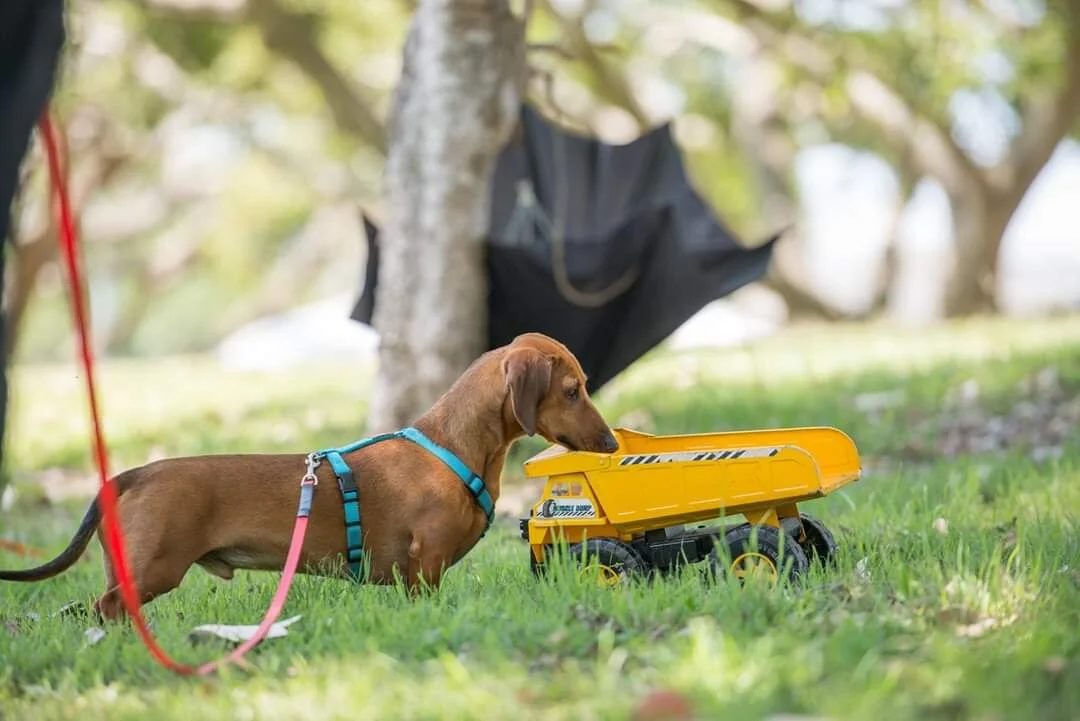Why a Smiling Leash should only be attached to an H-harness
We noticed that more an more people are swapping their short or retractable leashes for long classical leashes. We think this is just brilliant, as it gives dogs the chance to communicate and move naturally, make choices and explore on walks.
But it is tremendously important to make sure that any leash is attached to a piece of equipment that is comfortable and safe for our dogs. The only one we can recommend is an H-type harness.
Time to chuck the collar
Collars are luckily going out of fashion, but not fast enough, if you ask us. Why is that?
Collars are a serious health risk in many ways. The spine, endocryne glands, nerves, blood vessels, the oesophagus and other structures are easily damaged by collars. This damage can present in strange ways sometimes - as anything from limping to eye issues.
To find out more, please watch this short video.
Collars can also generate or aggravate behavioral issues because of the discomfort they cause. Imagine a curious young dog that sees another dog and wants to approach. She hurries up, as youngsters do, and is stopped by the pressure of her collar. This only needs to happen a few times for our young dog to start associating pain with the presence of another dog. We have just created the beginning of a behavioral issue that could very easily be avoided.
"But my dog doesn't pull or lunge," you might say. That may very well be true most of the time, but even the calmest, most beautifully behaved dog can pull on the leash in an unexpected situation. For some it might take a wild animal running past, maybe the sound of fireworks or another sudden loud noise. The dog - or her handler - may simply lose her balance, stagger or fall. Even one single incident can easily cause an injury if a collar is being used.
If you use a long leash in combination with a collar and your dog suddenly sees something she is either very interested in or very afraid of, she may try to run. On a longer leash, she will actually gather some speed before the inevitable stop. Imagine the pressure on the neck! This is a very dangerous combination.
Even when a harness is being used, we always advise the use of a "soft stop" technique, along with learning good loose leash walking skills. But if something surprises us, an abrupt stop on a harness is much, much safer, since a good harness will distribute the forces in a way that is least likely to hurt the dog.
Choose your harness wisely
It's clearly time to switch to a harness. Both for long walks and for toilet breaks, since surprises can happen anywhere. Here is a lovely article about the benefits of harnesses.
That being said, not every harness is good for your dog's health either. Unfortunately, some harnesses restrict dogs' natural movement, fail to take their anatomy into account, and even rely on aversive techniques to stop dogs from pulling. This is why we only recommend H-type harnesses with a clip at the back. We wrote about good and bad harness types here.
This checklist can help you recognize a good H-type harness:
Looking from the front, the straps of the harness form a Y shape on the chest. The point where the straps meet sits on the sternum bone. This way, if a dog does pull or lunge, the pressure is applied to the bone and not the soft tissue.
Looking from the top, we see an H-shape. There is a strap running parallel to the spine both on top and at the bottom of the torso. The clip for the leash is at the very back of this top strap, pointing towards the tail. This enables the correct distribution of forces and allows for natural movement.
Looking from the side, we can see that the shoulders are completely free. The straps that hug the ribcage are not digging into the armpit. They are also not putting pressure on the soft belly. They are sitting nicely and comfortably on the ribs.
If you want to know more about walking equipment, we invite you to take a look at these blog posts.




